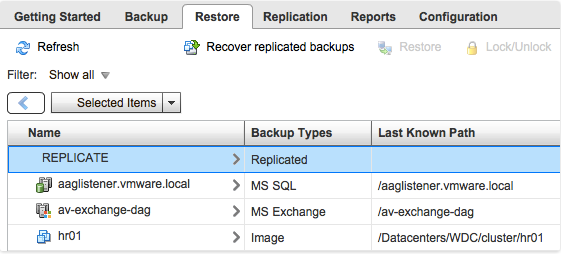First of all, both versions of vSphere Data Protection (VDP) gets new update. The latest versions will be vSphere Data Protection 5.8 when they'll be available for download.
For now the latest versions stays 5.5.6, which is already compatible with VSAN. The announce of the new version of VDP is especially interesting for customers who runs the vSphere Data Protection Advanced version. You'll see why in a minute.
vSphere Data protection has been here for a while. Introduced in vSphere 5.1 as a more robust and more reliable product which is based on EMC Amawar's code and uses variable-length deduplication. The variable-length deduplication is able to find more duplicate data patterns than fixed length because some of the repeating patterns are smaller than the fixed-length deduplication chunk size and are effectively “hidden” inside the larger fixed-size chunks that are being examined.
What's new in vSphere Data Protection 5.8?
VDP Advanced brings:
- Exchange DAG support – Compatible for Exchange 2013/2010/2007. Able to protect Active and/or Passive copies, depending of the policy. It's possible to choose a policy for backups. The “passive prefered” does backup of the passive copy of the DB (if ok). The “active prefered” backups the active DB. If the passive (or active) isn't clean, the other option is choosed in order to still produce a clean backup even if one DB isn't OK. VDP Advanced does have possibility to restore individual mailbox. Needs an agent running in Exchange VM.
- SQL Server AlwaysOn and Failover clusters – can backup and restore SQL Server data on shared storage in the cluster. Offers different backup/restore capabilities (Full, Incremental and Differential). Needs an agent running in the SQL server VM.
- Replicate and Restore Anywhere – several scenarios possible. Backup at site A and replicate to Site B. Backup to site B and replicate to site C, etc… The replication is efficient replicating only the changed blocks to the other site.
- External Proxies – possibility to deploy proxies which serves for caching and compression when replicating over WAN.
- Scalability – you can now have up to 20 VDP appliances connected in vCenter (previously 10 appliances). Each appliance scales up to 8Tb of data.
- Better Reporting – The reporting has been enhanced in the case when there is a task failure, the log information can be viewed directly within the VDP product. Also list of unprotected VMs now available, and all the reports are exportable as CSV files.
- Linux LVM support – Linux logical volume manager and EXT4 is supported. EXT4 is more advanced, better performing with improved design.
Screenshot from VMware Blog.
There is no news concerning VDP 5.8 standard however as all the advanced functions (including replication) mentioned above are part of the advanced version only. But I'd imagine that the 5.8 standard will benefit of all bug fixes present (when the product will be available as GA).
The advanced version is part of the vSphere bundle (from Standard up), where the VDP standard is bundled with vSphere Essentials Plus.
Source: VMware vSphere Blog

